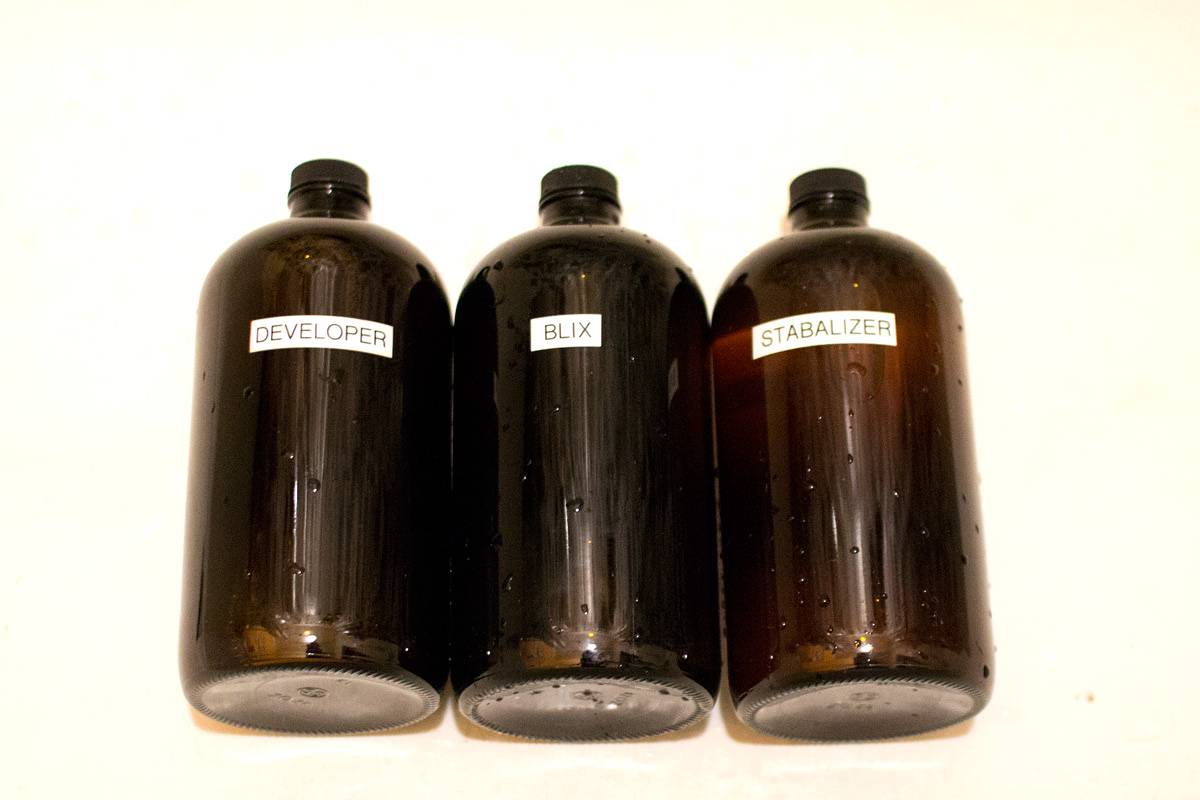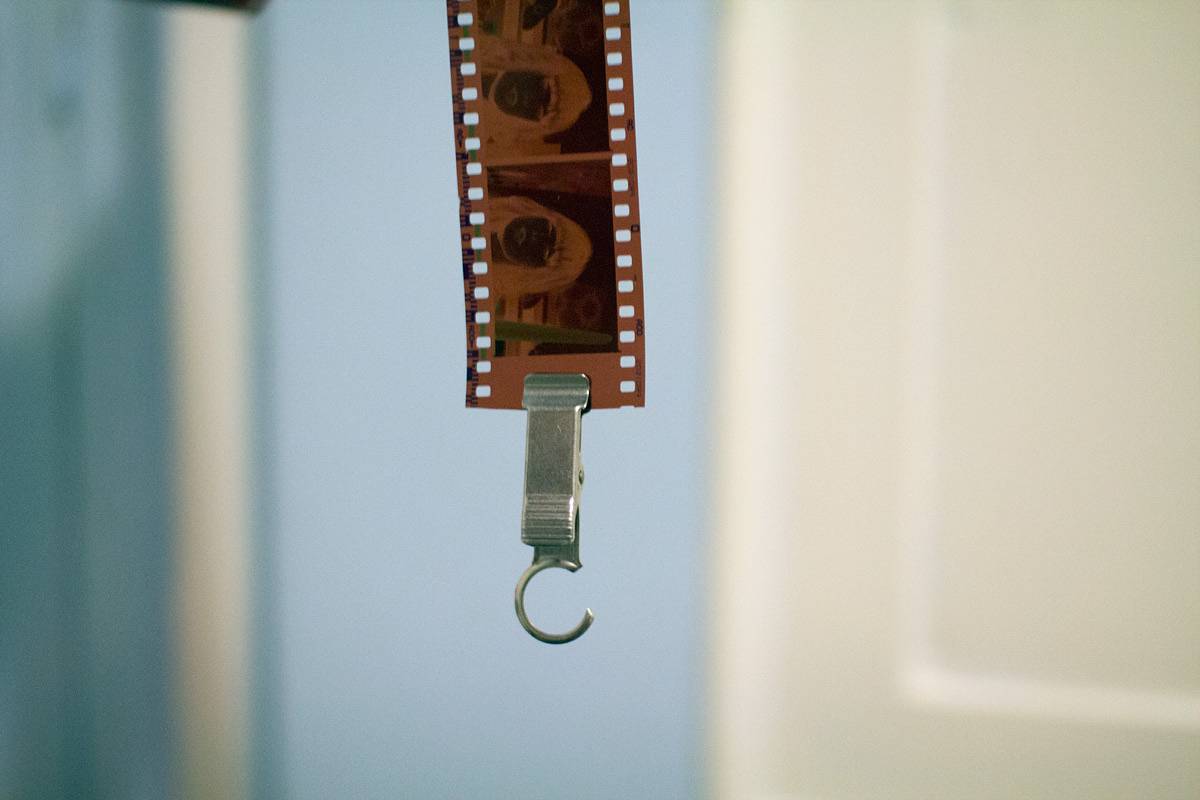US CitySlicker sixsixty's Ultimate Lomography DIY: Develop Your Own Film: Part 1
40 97 Share TweetCome with us on a journey through space and time to partake in the ultimate DIY adventure: developing your own film. In part 1 we will cover C-41 color negative and the lomo fan favorite: cross processing.

I don’t know about you, but I’ve definitely seen a decline in places that develop film these days. You used to be able to go to your local drugstore and get some film developed cheap—not so much anymore. The only places I find to get my film developed are the speciality shops. Now, I highly recommend getting film done at these speciality shops like the lomo gallery stores. They do an amazing job. But, if you’re like me and shoot multiple rolls of film a week, there’s no way you can afford that. So let’s take our film photography hobby to the next level: let’s develop our own film. It’s quite easy, much more affordable, and it feels like you’re doing SCIENCE!
A few things you definitely need:
(I’m not going to link to anything, but all these items are easily found online still. I’m also going to list prices as they are today in the US).
- Universal Film Tank. $22 – I highly recommend getting the Paterson Super System 4 brand. The other brands that i’ve tried tend to leak.
To start off, get a tank that can do 2 rolls of 35mm or 1 roll of 120. Later, it’s worth getting a second tank that can do 3 rolls of 35mm or 2 rolls of 120.

- 3 Containers to store the chemicals.
These should be 1 liter sized or 1 quart sized each. I have used some that are glass and some that are plastic. Get whatever you prefer or have around the house. Just make sure they seal well.

- 1 Large pitcher.
Get a cheap one from wherever. Plastic is fine. It helps if it has markings for 1 quart or 1 liter on it.
- Thermometer.
Get a cheap one. Just be sure you are able to read the individual degrees so you can tell when the chemicals get to 102 degrees exactly. I have tried a digital thermometer before, but those tend to get wet and go all wonky.

- C-41 Film Powder Processing Kit. $18
There are a few brands out there, sometimes they are called Press Kits. They have all the C-41 chemicals you need in one package. Some brands are Unicoor, Tetenal, and Arista. There are other C-41 methods and chemicals out there, but these press kits are the easiest to use and what we will cover here.
- Scissors to cut the film.
You should hopefully have this already.
- Spoon or something to mix chemicals with.
You could use a stick…but I would wash it first.
- Film Scanner.
So, this is the only expensive item you actually need. You can get one for under $100, a very decent one for under $200 and then for more professional features they can get a lot more expensive. Hopefully you already have a film scanner or if you can’t afford one, maybe you know a friend with one you can use. I highly recommend getting a scanner though, it opens up so many new opportunities with shooting film.
Misc items you don’t need but definitely help:
- Stop watch.
You can use whatever you have handy, phone, clock, whatever. A stop watch is nice though so you don’t accidentally drop your phone in the tub or spill chemicals on it.
- A funnel would be nice to get the chemicals back into the containers.
- Film Leader Retriever. $5
These come in really handy for getting film out of the 35mm reels. If you don’t have one of these just use a bottle opener to get your film out, but doing it with a film leader retriever makes things much neater.
First step in this process: get the film into the Tank.
Practice doing this in the light to see how it is done, but—and this is a big butt—when you do this for real, this has to be done in complete darkness or as close to as possible. I just go into my bathroom and close the door, then make sure no light is leaking in around the door frame (stick a towel in the cracks or use tape). The darker you can get it the better. They also make dark bags for doing this, but that cost money and we are being cheap here.
So again practice this in the light first. Get a junk roll of film, something you don’t care about throwing away. I used this piece of c**p C-41 B&W film for an example. Full instructions for this is also included with the tank, but the basics are:
- Pull a little bit of the film out and cut off the end.
- Pull more of the film out and start to feed it into the reel.
- Twist the reel back and forth until all the film is loaded.
- Cut off the end of the film.
- Put the reel in the tank and close the tank. it is now completely dark in there and you can turn the lights back on. Hopefully, no hanky-panky stuff went on in the dark…this is serious business.
Practice, Practice, Practice. Do this over and over again in the light until you can do it blindfolded. Then practice it in the dark too. Use 35mm and 120 to practice.
Next step: mixing the chemicals.
This is really easy to do, and the full instructions are included. Just warm up some water and pour it into the pitcher. Then add your chemicals as instructed and
mix them up. Put the mixed chemicals into the containers. But, be sure to label your containers!!!! You will end up with 3 bottles of chemicals, developer, blix (bleach+fixer), and stabilizer.
Next, we need to make sure the chemicals are at the right temperature. I used my bathtub for this, but if you have a nice big sink that can fill up with water (not dishes) you can use that too. To save water I use a plastic bin, so I don’t have to fill up my whole tup. Anyway, fill up whatever you got with hot hot water and put the developer and the blix in the water. The stabilizer doesn’t need to be warmed up. Then, put your thermometer into the developer. The goal is to get the developer to 102 degrees exactly.
Again, the full set of instructions are included with the chemicals, so just the basics here: One thing to note, I will list the times here for each step. During those times you need to agitate the tank. The basic instructions for that is every 30 seconds flip the tank upside down and back 4 times. It’s important not to over agitate the film, that can tend to make it come out over exposed, so just follow what it says.

- Fill up the tank with 102 degree water. 1 min. dump it out.
- Fill up the tank with 102 degree developer. 3:30 min. Dump it back into the developer container. (we save this)
- Fill up the tank with 102 degree-ish water and dump it right out.
- Fill up the tank with 102 degree-ish blix. 6:30 min. Dump it back into the blix container.
- At this point we can open the tank. Rinse the tank under 102 degree-ish running water for 3 min.
- Fill up the tank with room temp stabilizer. 1 min. Dump it back into the stabilizer container.
-Squeegee the film with either your fingers or a film squeegee or a sponge, and then hang them up on hangers with clips.
- Let them dry for a few hours.
- Cut them up and put them into sleeves (or not).
- I like to put them in a heavy book and let them sit for a few more hours. this helps straighten them out.
Thats it! That’s it? Yup, you know have developed film. You can then go scan them at your leisure. We won’t be going over scanning here, but there are plenty of good tutorials for that. They say you can reuse these chemicals for up to 8 rolls, however I’ve gotten much much more. Some people say you could even do 40+ rolls with a single set of chemicals, but the fresher the chemicals the more consistant the results.
written by sixsixty on 2012-08-23 #gear #tutorials #film #diy #color-negative #c-41 #science #lab-rat #tipster #development #xpro #develop #film-processing #the-shooting-gallery-series































40 Comments